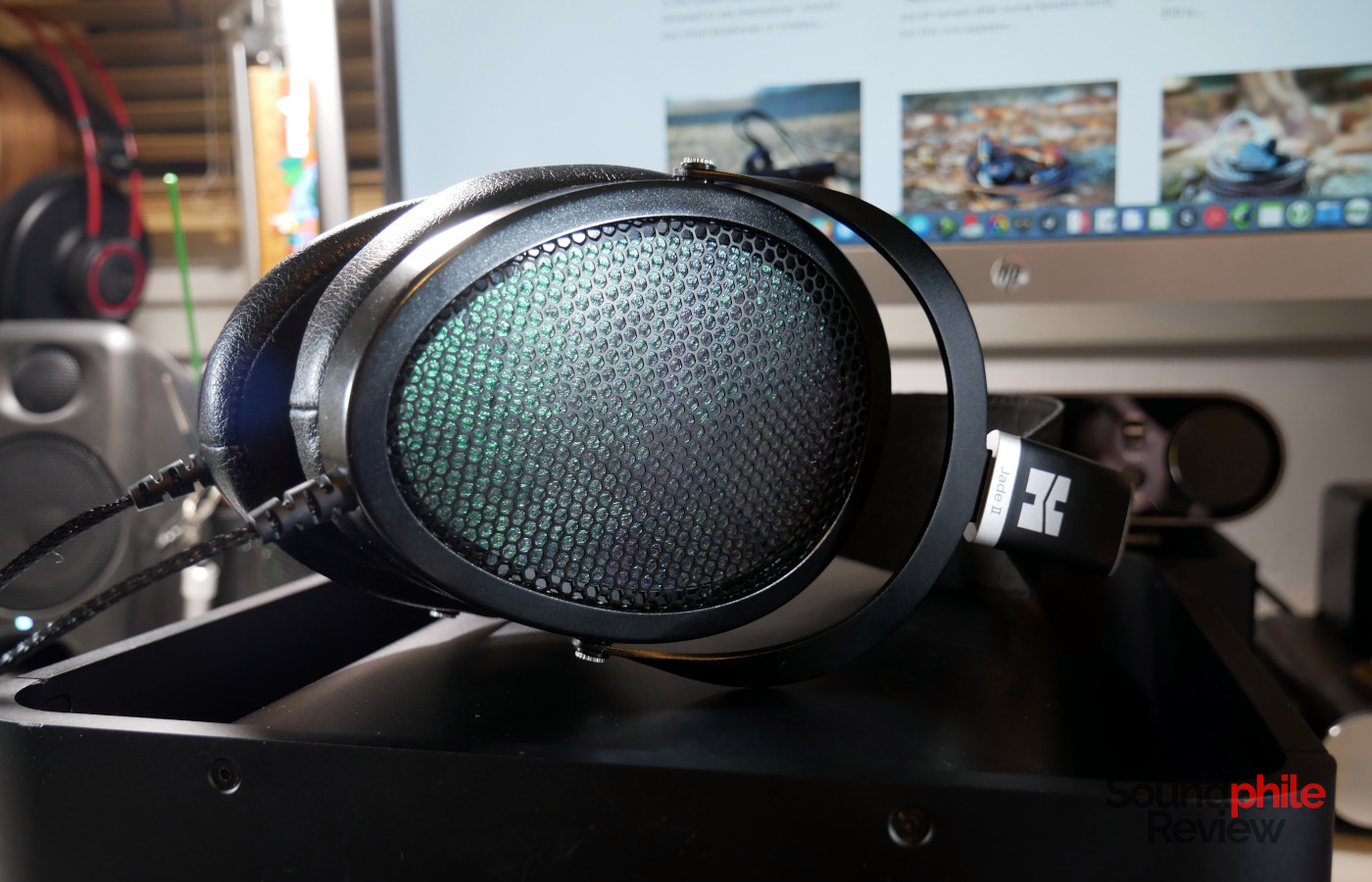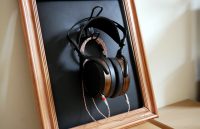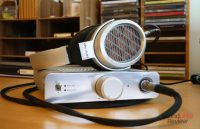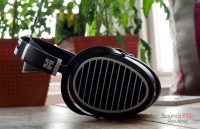Among things which are stereotypically Chinese to Westerners is certainly jade. In the case of the HiFiMAN Jade II, though, jade is also the colour of the diaphragm and the origin of the name.
Disclaimer: I got this unit as part of the European tour of the Jade II, which means it has been shipped from one reviewer to the next. The Jade II headphones retail for $900, while the amplifier retails for $1600. If bought together they are sold at $2499. Additional information is available on the manufacturer’s website.
TL;DR: recap
| Pros |
Cons |
| Incredibly comfortable
Engaging, “natural” sound Extremely wide soundstage Well-detailed |
Stock cable is stiff and difficult to manage
Expensive |
Rating: 8/10
Packaging & Accessories
I received the HiFiMAN Jade II system in a very large box which contained two smaller boxes, one for the amplifier and one for the headphones. There were no manuals or anything else, just the headphones and the amplifier; that’s probably due to this unit being part of the European tour – the accessories must have been lost at one of the various stops and that’s understandable. That’s why I’m not including any pictures – brown cardboard boxes are boring. The
HiFiMAN Jade II Headphones Design & Comfort
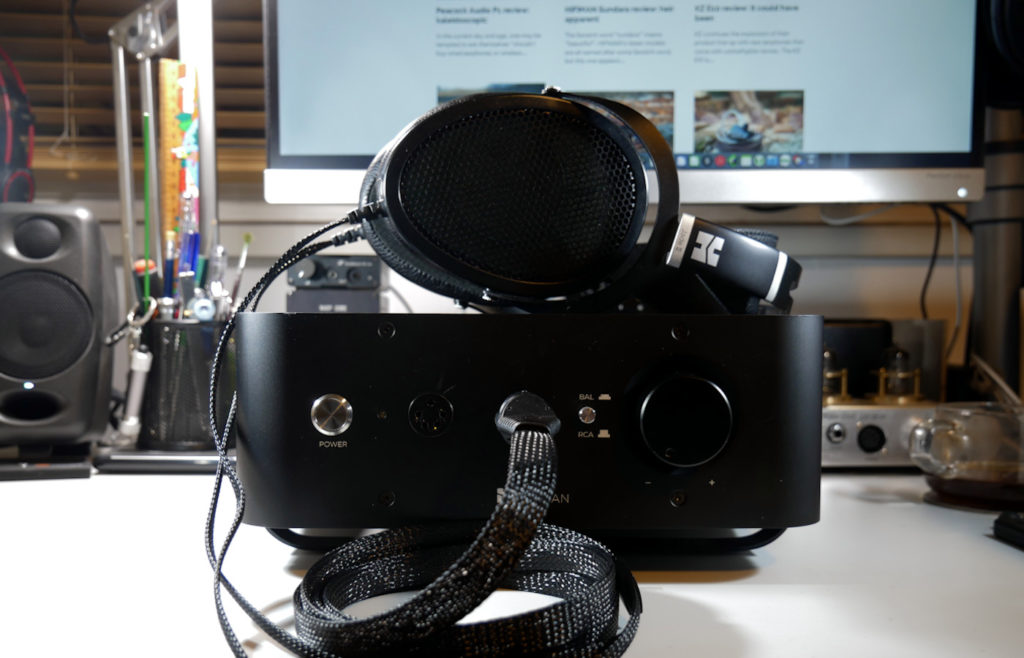
The HiFiMAN Jade II are part of the latest family of headphones by HiFiMAN (as of writing) which includes the new headbands. This family includes the HiFiMAN Sundara and appears to be the standard which the company will use in upcoming years. The earcups have the unusual “inverse drop” shape which HiFiMAN has used on its high-end products in the last several years, coupled with a plastic frame. In fact the headband is made of metal (presumably aluminium) with plastic parts, while the earcups are entirely made of plastic. This gives the Jade II an unexpected cheap feeling which clashes with the real value of the item and the apparent care the designers took in making the Jade II look like premium headphones.
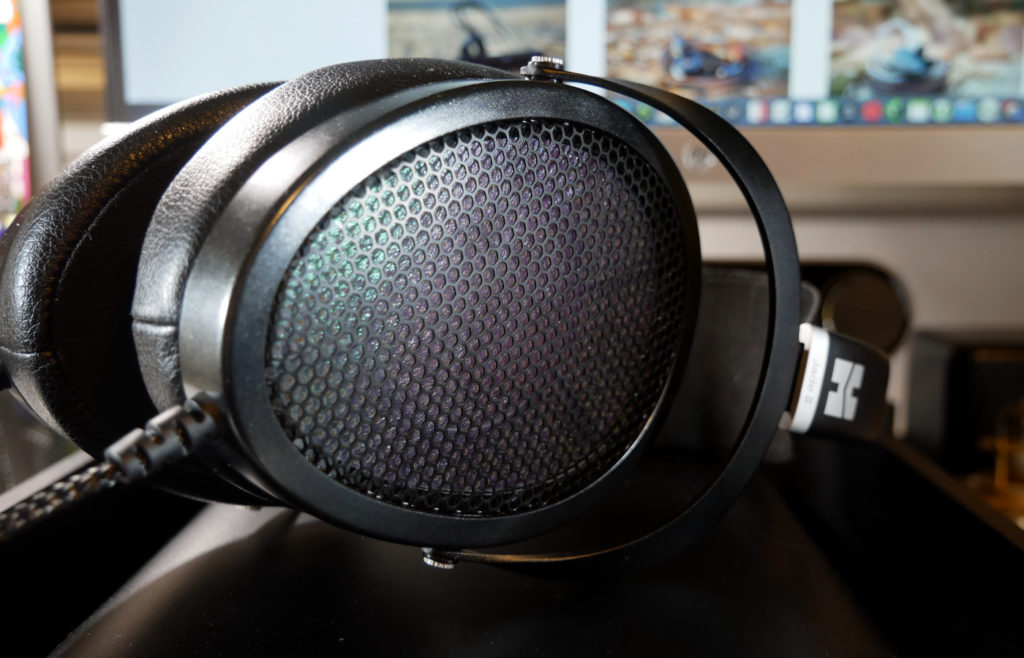
The Jade II are in fact evidently high-end headphones, but the details are not as well chiselled as they should: the plastic used for the earcups feels cheap, the metal grille which covers the thin diaphragm is so thin it flexes as soon as you press lightly on it, the plastic of the headband looks out of place. Now mind you, this is all appearance, because they actually feel kinda solid. There’s no creaking or any other sign of structural weaknesses, so I don’t doubt their durability. Still, I would have expected them to be a bit more premium in build, on top of price.
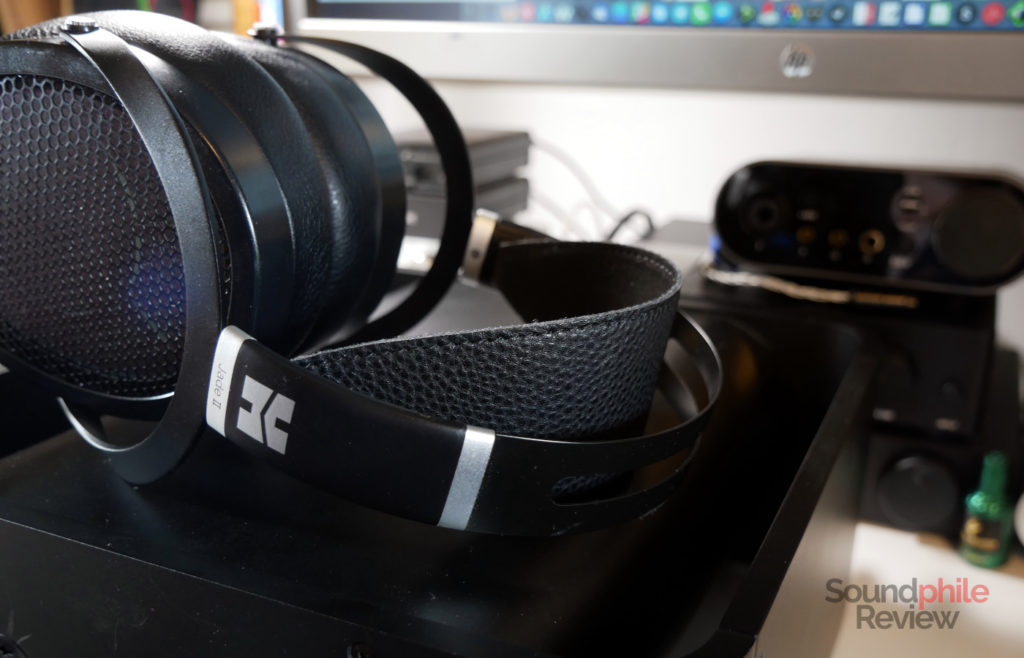
But plastic comes with its own set of advantages. The Jade II are incredibly light and this means they stay comfortable over longer listening sessions. In fact the light weight (around 350 g) and the suspended headband design, which is further enhanced by the use of very soft leather, team with the soft yet firm (or is it “substantial”? Here kicks in my non-nativeness!) earpads to create a wearing experience which make you feel almost as if you weren’t wearing the headphones at all.
Comfort is even better than that of my own HE-560 – I can literally wear the Jade II for 6 hours without having any sort of fatigue or discomfort. That’s quite the achievement, considering my scalp is hyper-sensitive and makes wearing full-size headphones a pain (quite literally!) most of the time. Bravo to HiFiMAN for delivering such a comfortable design!
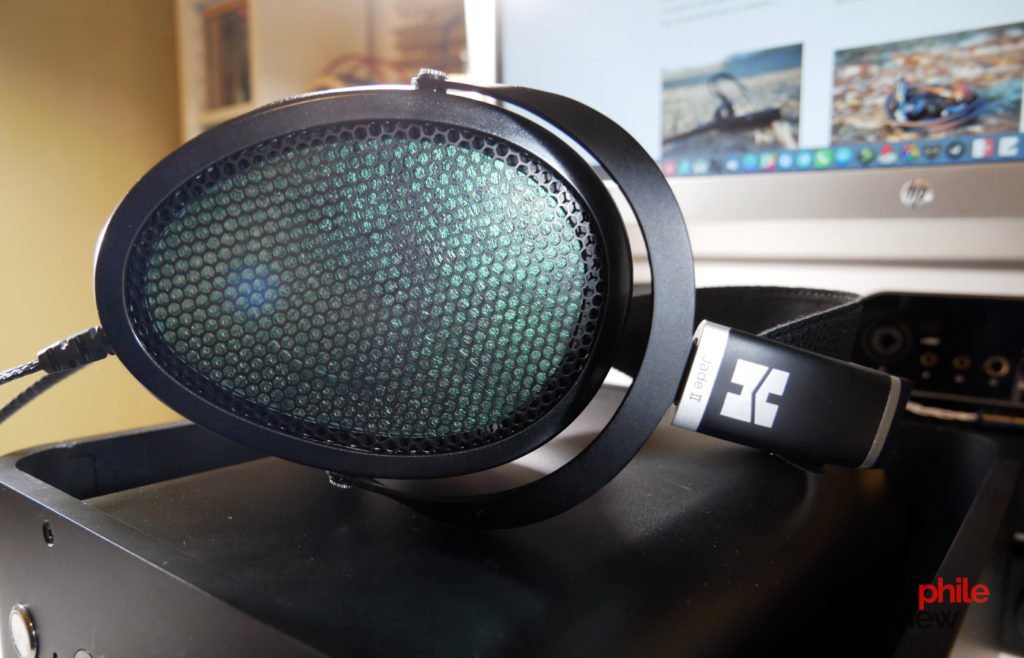
As the HiFiMAN Jade II are open-back, they offer no isolation – like, nothing, rien, niente, nil, null, zero, nada. Plus, they also leak sound quite a lot. So they’re definitely not the kind of headphones you would want to listen to in a public place, although it’s really a physical challenge to take the headphones with their cumbersome amplifier anywhere.
The cable is quite large: it is actually made of very thin cores, but they’re sleeved in a large mesh-like container. It is well-built but it’s not removable. The main issue I can find is that it’s roughly 2.5 m long: it’s too long to let you use the headphones at your desk and too short to do that from your sofa. Also, it is stiff laterally and tends to curl up, which is again not ideal when using the headphones at your desk.
HiFiMAN Jade II Amplifier Design & Build
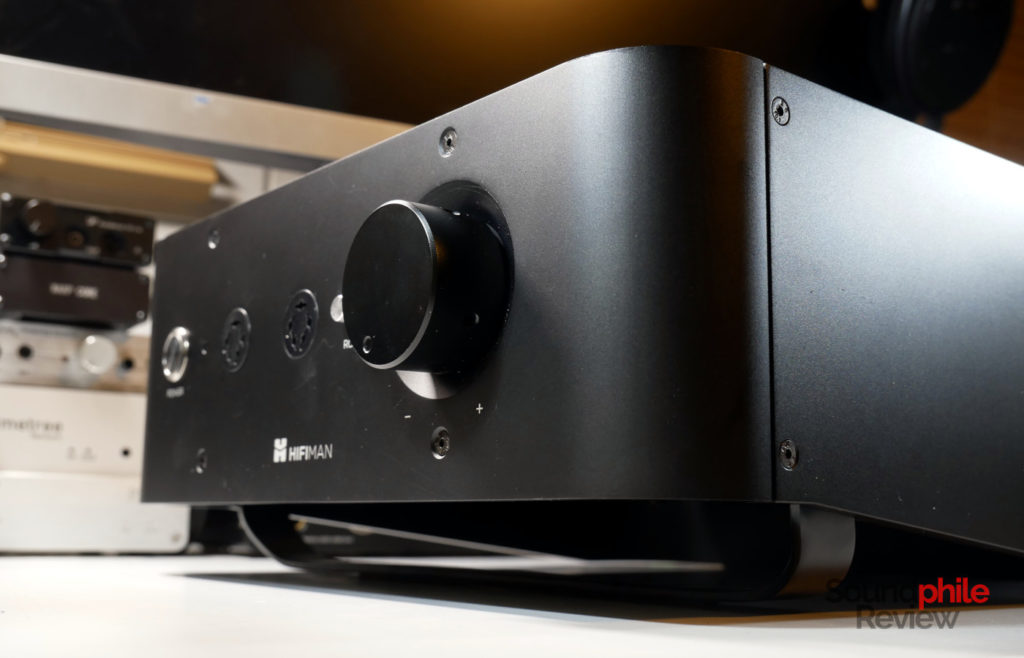
The HiFiMAN Jade II amplifier is quite a statement in terms of size and design. It’s massive, at 276 x 270 x 116 mm and 6.5 kg weight, due to the fact it’s made out of solid metal. The four “walls” surrounding it are made out of a ~5 mm-thick bent sheet of metal (presumably aluminium?). One thing’s for sure: the amplifier is quite large and requires lots of space. Unless one has a really large desk, it is not recommended to keep it there – it’s bigger than my Topping DX7 and THX AAA 789 stacked on top of each other! And it also requires an external DAC to work, which makes it even more difficult to place on a desk.
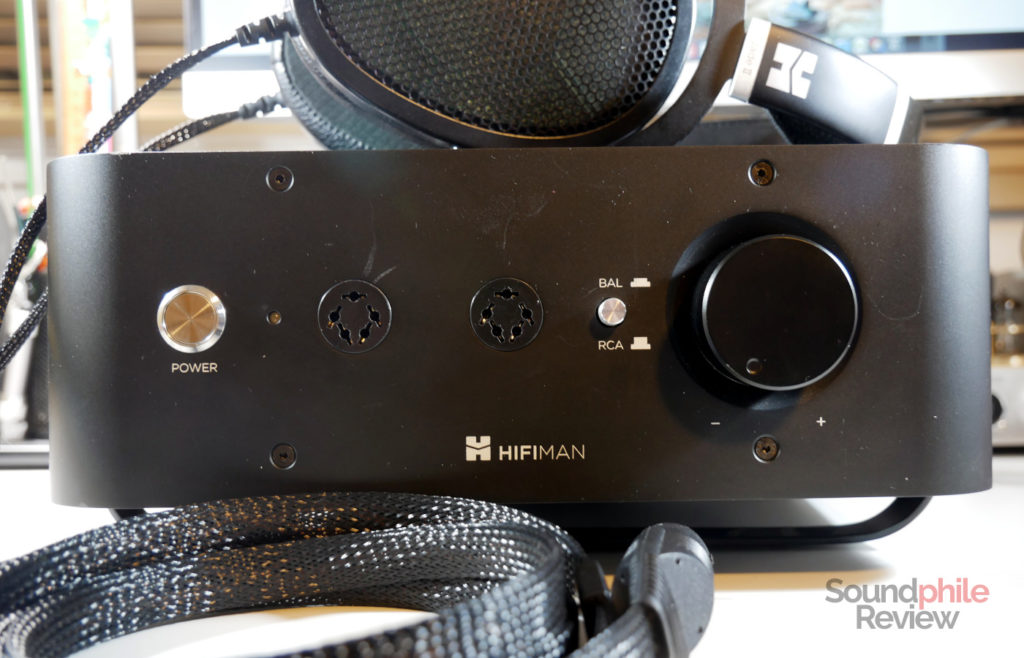
The design is not outlandish, but it’s certainly quite unique. A central body is surrounded by the aforementioned four “walls” with two holes at either sides. The “walls” are shorter at the front, so they expose the lower side of the main body. This should favour air circulation and keep temperature in check. On top of actually being imposing, the Jade II amplifier looks imposing too. It also looks fairly durable, though the travels around Europe of this unit have taken their toll and left a few marks on the metal.
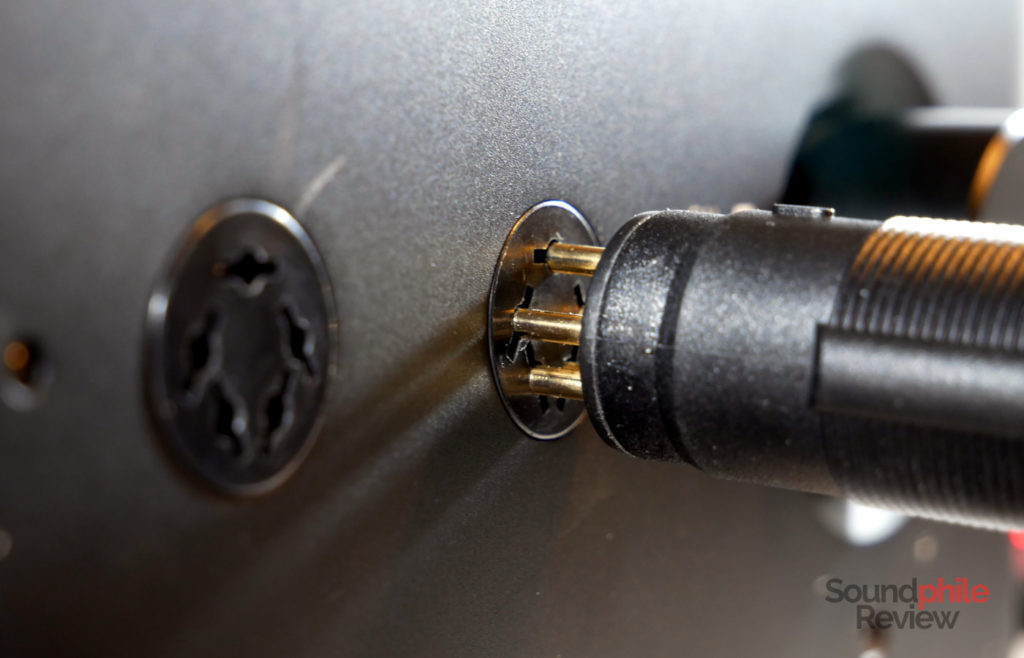
The front hosts the power button (which is of the “if you press it, it stays pressed” kind), two headphone output ports, an input selector and the volume knob. The back only hosts the power connector, two RCA input connectors and two XLR3 connectors. It’s quite streamlined and easy, which I find a pleasant bonus.
The button on the front which allows one to select either unbalanced (RCA) or balanced (XLR3) input is not devoid of criticism, though. An image explains that when it’s pressed the balanced input is selected, while the RCA input is active if the button is unpressed. Alas the difference between “pressed” and “unpressed” is extremely hard to tell, so much so that you actually can’t if you don’t try to push it. A better design would be appreciated.
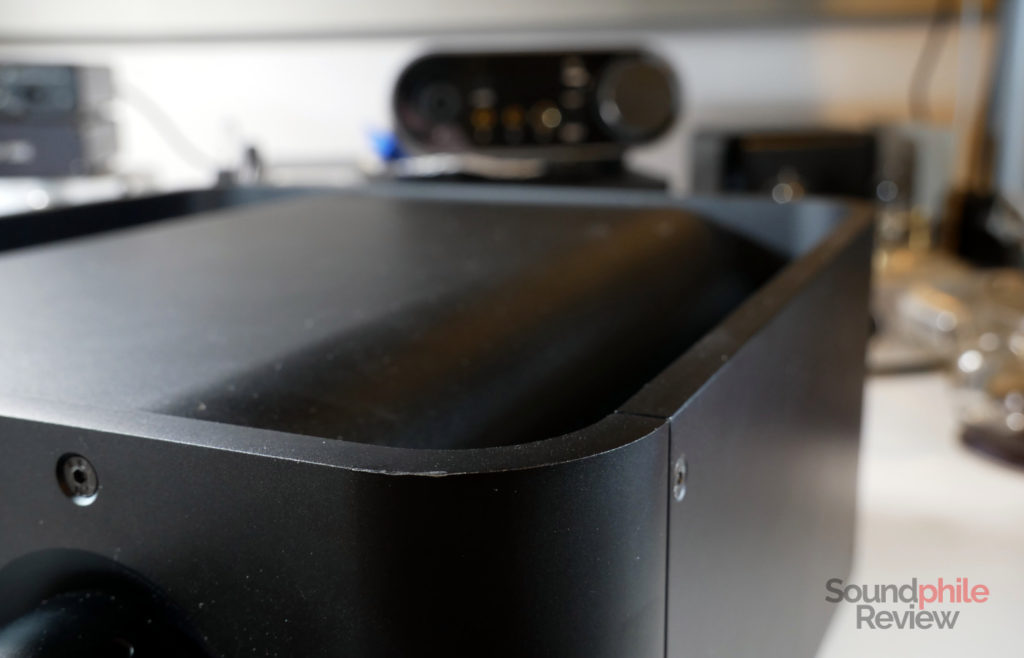
The amplifier runs quite warm, up to the point it’s almost too warm. Even with an ambient temperature of roughly 19 °C it is really warm to the touch, so I guess using it during summer must be a torture – or even not safe at all, if the temperature rises too much. The label says that it gobbles up up to 80 W of power, which is quite a lot and explains the warmth.
Sound & Headphone Specs
Being the amplifier and energiser unit devoid of a DAC of its own, I used both a Topping D30 and a Topping DX7.
HiFiMAN Jade II |
| Frequency response | 7 – 90,000 Hz |
| Impedance | N/A |
| Sensitivity | N/A |
It may well be my own prejudice, but when I approach electrostatic headphones I always tend to expect them to wow me. Although the HiFiMAN Jade II are really good headphones, they do not have the same “wow” factor of other electrostatic headphones I’ve tried so far (e.g. Warwick Acoustics Sonoma M1). Despite offering a balanced sound presentation and good technical ability, they do not offer a considerable difference (which should not necessarily be a step up, just a difference!) from planar headphones.
What I expected out of headphones with such a large diaphragm was a large sensation of impact and physicality. Alas this is not the case. While the HiFiMAN Jade II do offer blistering speed, with very fast transients and superb control, they offer little in terms of feeling of music being physical. One can really appreciate the speed by listening to tracks such as Dead Already from the American Beauty soundtrack: percussions are portrayed in a way that makes them them pop out and appear realistic in their sound being immediate – they only lack the physical impact that the real thing has.
The HiFIMAN Jade II offer a very large soundstage: it has great width, but only average depth. It extends much more laterally than it does frontally, so it is almost as if one was listening to music in a large corridor. Instruments are placed on the stage with good ability, as each has its well-defined place. The only issue with imaging is that it is almost entirely lateral, with very few instruments appearing as if they were in front of the listener. Instrument separation, on the other hand, is quite refined as it allows one to pick an individual instrument even in complex tracks with many different instruments playing.
Bass does not have the same extension to the lowest notes that many of HiFiMAN’s magnetoplanar headphones have. The Jade II can still reach 20 Hz, but the frequency response is not as linear and there is noticeable roll-off happening below 50 Hz. That’s a known limitation in electrostatic technology, but it has to be noted that the Jade II deliver better-than-expected behaviour in this area. In general bass is just south of neutrality, as it offers good body but is often a bit shy. It’s really enjoyable in most tracks, even those that require good oomph (e.g. Rammstein’s Wollt ihr das Bett in Flammen sehen). Thanks to its really high speed it sounds clear and clean, with a whole host of details that emerge clearly even in loud and complicated tracks. In Rammstein’s Der Meister one can clearly hear the vibrations of the bass’ strings, just as in Massive Attack’s Angel. Considering these are electrostatic headphones they do an excellent job at reproducing bass – far better than one would expect, in fact.
Midrange is the star of the show here, as it stands front and centre. The beautiful L’uomo nero by Brunori Sas has multiple voices singing and the Jade II allow one to hear each one almost as if it was singing alone. In fact midrange is clear and clean enough to allow instruments to emerge from the mix clearly. The tonality is almost perfectly neutral, with small deviations that favour the lower and upper ends of the range. Still, the clarity of the sound coupled with the large amount of details and decent amount of micro-details makes almost every track sound satisfying and deep. Female voices are slightly more emphasised and present than male voices, just as high-pitched instruments such as violins, electric guitars, accordions and trumpets (and so on) receive a tad more emphasis than other instruments. The overall tonality is really relaxing and almost soothing, though, with tracks such as Birkin Tree’s Carrickfergus being just calming and laid-back as they should.
Treble is the only area where there is some emphasis that goes beyond an ideal neutrality. One can hear this in tracks such as Serra Pelada or That Place from the Powaqqatsi soundtrack by Philip Glass: tambourines and triangles are more emphasised than other instruments. This emphasis is right at the border with fatigue, but it never crosses that border and this gives vividness and brightness to the sound without also giving it sharpness. It’s a very well-made take on a bright tuning which pushes the limit of what is still accurate while adding a bit of energy to this area. The detail level is really high as you would expect from electrostatic headphones.
I found the HiFiMAN Jade II to work well with most genres, though their lack of sub-bass makes them not ideal for genres which require a lot of it – chiefly electronica.
HiFiMAN Jade II Comparisons
I am not able to do an apples-to-apples comparison and compare the Jade II to other electrostatic headphones. I will however provide you with a comparison against other headphones using different principles: dynamic and magneto-planar.
- HiFiMAN Jade II vs HiFiMAN HE-560: the HE-560 offer more bass depth and a bit less emphasis on treble, but they’re otherwise quite similar. HiFiMAN seem to have tuned them to be not too far off from each other. There are some differences in technical ability, though: the Jade II offer a wider but shallower soundstage, with similar accuracy in instrument position but much less variety in those positions – basically it’s either left or right, with centre sounding more like “left plus right”. Instrument separation is better on the Jade II, though not by a very large margin.
- HiFiMAN Jade II vs Spirit Torino Radiante: the Radiante and the Jade II couldn’t be more different in tuning! The Radiante has a large focus on bass, which contrasts the Jade II’s focus on midrange starkly. The most interesting comparison is not about tuning, but their technical ability. Contrary to the Jade II, the Radiante offer great imaging that almost makes you feel the sound coming from the front. The instrument separation is also comparable, while the soundstage is slightly larger on the Jade II. This is interesting given the Radiante costs almost three times the Jade II and highlights the value of the Jade II.
Final Thoughts
The clean and detailed listening experience that the HiFiMAN Jade II offer is superb. The refined sound they produce is what many people are after. We have to look at the Jade II as headphones and not as a full system though, as the price of the full system makes it not stand the comparison with planar or dynamic headphones of similar pricing. Having this said, while the Jade II stand out for their technical ability, they do not really stand out for anything specific. This may be a good thing though, as they’re very good in all fields, although they fall just short of excellence.
At less $900 the headphones are surely worth it, no questions asked. The amplifier may be a bit more affordable, but it’s still good. In general, I find the HiFiMAN Jade II to be quite exceptional – they offer a truly comfortable, detailed, relaxing yet accurate portrayal of music which is hard to come by.

